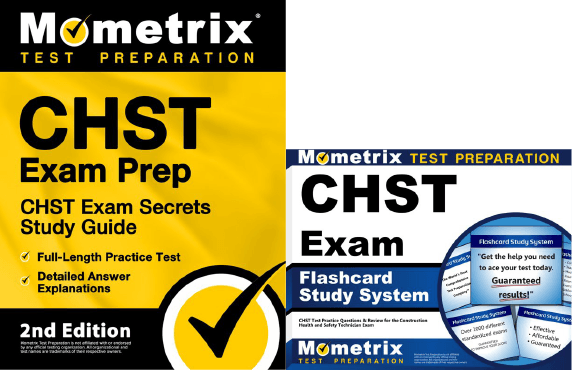- Hoisting and rigging
- Crane operations
- Material handling and storage
- Housekeeping
- Powder actuated tools
- Hand and power tools
- Asbestos exposure
- Lead exposure
- Noise exposure
- Radiation exposure
- Silica exposure
- Chemical exposure
- Working in extreme temperatures
- Vibration and impact exposures
2. EMERGENCY PREPAREDNESS, INCIDENT INVESTIGATION, AND RESPONSE
19.9% of the exam
- Proper fire protection and prevention methods
- Components of emergency action plans
- Common elements of response plans for environmental hazards
- Emergency response system
- Potential first aid or medical needs
- Universal precautions
- Planning for emergencies
3. SAFETY PROGRAM DEVELOPMENT, IMPLEMENTATION, AND SUSTAINMENT
22.5% of the exam
- Applicable health and safety standards and best practices
- Common components of site-specific safety plans
- Worksite assessment or audit processes
- Roles, responsibilities, and lines of authority as they relate to safety management
- Recommended equipment inspection records or logs
- Basic risk management concepts
- General/basic construction site conditions that could potentially impact safety
- Data gathering techniques and procedures used in incident investigations
- Techniques for determining the root cause of accidents or incidents
- Post-incident/accident reporting and follow-up procedures
- Documentation requirements of occupational injuries and illnesses
- Identifying which health and safety programs are relevant to a site-specific safety plan
- Applying relevant standards to worksite conditions
- Identifying trends related to incidents and accidents
- Evaluating construction means and methods and their impact on safety
4. LEADERSHIP, COMMUNICATION, AND TRAINING
21% of the exam
- Available training delivery methods and instructional materials
- Appropriate human behavior motivation methods and techniques
- Communication strategies
- When to consult with equipment manufacturers, suppliers, or subject matter experts
- Information confidentiality requirements
- BCSP Code of Ethics
- Developing site-specific safety training requirements based on job tasks and work environment
- Maintaining all applicable documentation
- Determining training requirements and delivery methods based on characteristics and needs of worksite personnel
- Identifying existing and foreseeable at-risk conditions and behaviors
- Recognizing situations or behaviors that present imminent danger
- Coaching personnel to correct unsafe behaviors
- Accessing relevant current information
How to Register
To get started with the registration process, you’ll need to submit an application via the BCSP website. This application includes a $140 application fee.
Once your application is approved, you’ll be given the necessary information to register for the exam. The registration process includes a $300 registration fee.
CHST Study Guide and Flashcards
Get practice questions, detailed study lessons, and complex subjects broken down into easily understandable concepts.

Exam Scores
The exam is scored using two methods: the modified Angoff method and the bookmark standard setting method.
Modified Angoff Method
This method relies on a group of subject matter experts to evaluate each question on the exam and determine its overall difficulty. Once a rating is agreed upon for each question, they establish a cut score, which indicates how many questions you need to answer correctly to be at the minimum level of competency.
Bookmark Standard Setting Method
This method relies on a group of subject matter experts to evaluate each question on the exam one at a time. The goal is to find a single question that represents the minimum level of knowledge/ability required to be a competent CHST (in some cases, they may decide there are multiple “bookmark” questions).
To pass the exam, you’ll need to answer at least 140 questions correctly.
Retaking the Exam
If you didn’t get a passing score on your first try, that’s okay! You can retake the test as many times as you’d like. Just note that there’s a mandatory six-week waiting period between attempts.
Online CHST Prep Course
If you want to be fully prepared, Mometrix offers an online CHST prep course. The course is designed to provide you with any and every resource you might want while studying. The CHST course includes:
- Review Lessons Covering Every Topic
- 600+ CHST Practice Questions
- More than 300 Digital Flashcards
- Money-back Guarantee
- Free Mobile Access
- and More!
The CHST prep course is designed to help any learner get everything they need to prepare for their CHST exam. Click below to check it out!
FAQs
What is CHST certification?
The Construction Health and Safety Technician certification is offered by the BCSP to recognize people who have demonstrated competency in preventing construction-related injuries and illnesses.
How do you get CHST certification?
To receive CHST certification, you’ll need to pass the CHST examination.
Is the CHST exam difficult?
It all depends on how much you prepare for the exam. Overall, it’s considered to be a moderately difficult exam.
How many questions are on the CHST exam?
The exam contains 200 questions.
What is the time limit for the CHST exam?
The exam is timed at 4 hours.
How much does the CHST exam cost?
The total cost of the exam is $440.
What does CHST stand for?
CHST stands for Construction Health and Safety Technician.



© 2024 | All Rights Reserved
All material on this website is copyrighted. TestPrepReview.com provides free unofficial review materials for a variety of exams.
All trademarks are property of their respective owners.
This content is provided for test preparation purposes only and does not imply our endorsement of any particular political, scientific, or religious point of view.